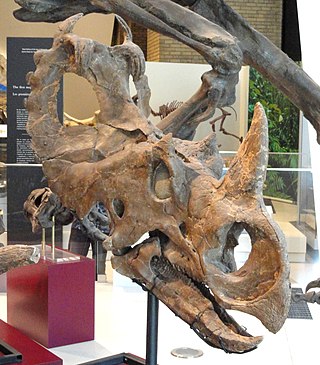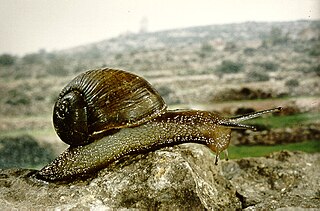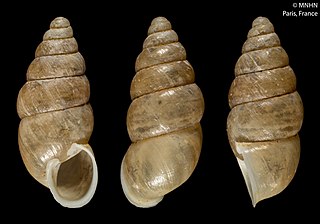
The Sea of Azov is an inland shelf sea in Eastern Europe connected to the Black Sea by the narrow Strait of Kerch, and sometimes regarded as a northern extension of the Black Sea. The sea is bounded by Russia on the east, and by Ukraine on the northwest and southwest. It is an important access route for Central Asia, from the Caspian Sea via the Volga–Don Canal.

The Ural, also known as the Yaik, is a river flowing through Russia and Kazakhstan in the continental border between Europe and Asia. It originates in the southern Ural Mountains and discharges into the Caspian Sea. At 2,428 kilometres (1,509 mi), it is the third-longest river in Europe after the Volga and the Danube, and the 18th-longest river in Asia. The Ural is conventionally considered part of the boundary between the continents of Europe and Asia.

The Kuban is a river in Russia that flows through the Western Caucasus and drains into the Sea of Azov. The Kuban runs mostly through Krasnodar Krai for 660 kilometres (410 mi), but also in the Karachay–Cherkess Republic, Stavropol Krai and the Republic of Adygea.

Centrosaurus is a genus of centrosaurine ceratopsian dinosaur from Campanian age of Late Cretaceous Canada. Their remains have been found in the Dinosaur Park Formation, dating from 76.5 to 75.5 million years ago.

Monoclonius is an extinct genus of herbivorous ceratopsian dinosaur found in the Late Cretaceous layers of the Judith River Formation in Montana, United States, and the uppermost rock layers of the Dinosaur Park Formation in Alberta, Canada dated to between 75 and 74.6 million years ago.

Centrosaurinae is a subfamily of ceratopsid, a group of large quadrupedal ornithischian dinosaur. Centrosaurine fossil remains are known primarily from the northern region of Laramidia but isolated taxa have been found in China and Utah as well.

Physella acuta is a species of small, left-handed or sinistral, air-breathing freshwater snail, an aquatic gastropod mollusk in the family Physidae. Common names include European physa, tadpole snail, bladder snail, and acute bladder snail.

Cantareus apertus, commonly known as the green garden snail, is a species of air-breathing land snail, a terrestrial pulmonate gastropod mollusc in the family Helicidae, the typical snails.

Lithoglyphus naticoides, the gravel snail, is a species of small or minute freshwater snail with an operculum, an aquatic gastropod mollusk in the family Lithoglyphidae.

Theodoxus fluviatilis, common name the river nerite, is a species of small freshwater and brackish water snail with a gill and an operculum, an aquatic gastropod mollusk in the family Neritidae, the nerites.

Freshwater snails are gastropod mollusks that live in fresh water. There are many different families. They are found throughout the world in various habitats, ranging from ephemeral pools to the largest lakes, and from small seeps and springs to major rivers. The great majority of freshwater gastropods have a shell, with very few exceptions. Some groups of snails that live in freshwater respire using gills, whereas other groups need to reach the surface to breathe air. In addition, some are amphibious and have both gills and a lung. Most feed on algae, but many are detritivores and some are filter feeders.

Johann Samuel Schröter was a German Protestant pastor since 1763, who was also a conchologist, mineralogist and palaeontologist. He was a member of the Academy of Sciences Leopoldina.

Vitta virginea, the virgin nerite, is a species of sea snail, a marine gastropod mollusk in the family Neritidae.

Lithoglyphus is a genus of freshwater snails with gills and an operculum, a gastropod mollusk in the family Lithoglyphidae.
Nicolla skrjabini is a species of trematodes in the family Opecoelidae.
Lithoglyphus pyramidatus is a species of freshwater snail with an operculum, an aquatic gastropod mollusk in the family Lithoglyphidae.

Coronosaurus is a genus of centrosaurine ceratopsian dinosaurs which lived in the Late Cretaceous, in the middle Campanian stage. Its remains, two bone beds, were discovered by Phillip J. Currie in the Oldman Formation of Alberta, Canada, and its type and only species, Coronosaurus brinkmani, was first described in 2005, as a new species within the genus Centrosaurus. Later studies questioned the presence of a direct relationship, and in 2012 it was named as a separate genus. Coronosaurus means "crowned lizard", coming from "corona", Latin for crown, and "sauros", Greek for lizard; this name refers to the unique, crown-like shape of the horns on the top of its frill.

Apoecus is a genus of air-breathing land snails, terrestrial pulmonate gastropod mollusks in the subfamily Eninae of the family Enidae.
Zonitoides apertus is a species of small air-breathing land snail, a terrestrial pulmonate gastropod mollusk in the family Gastrodontidae.
















